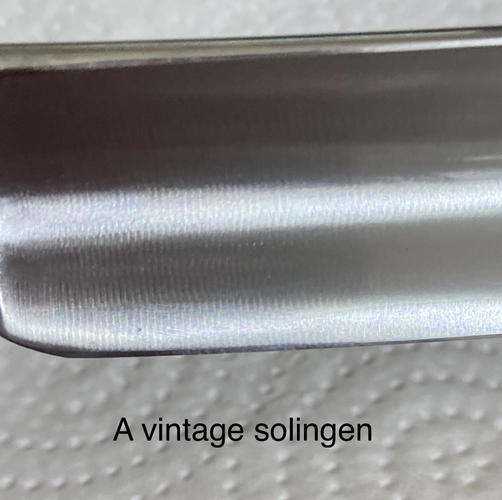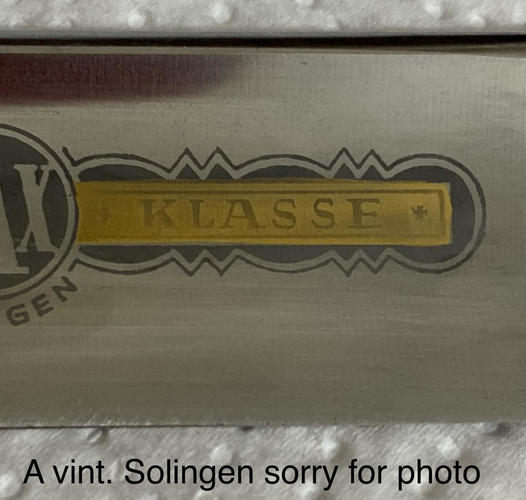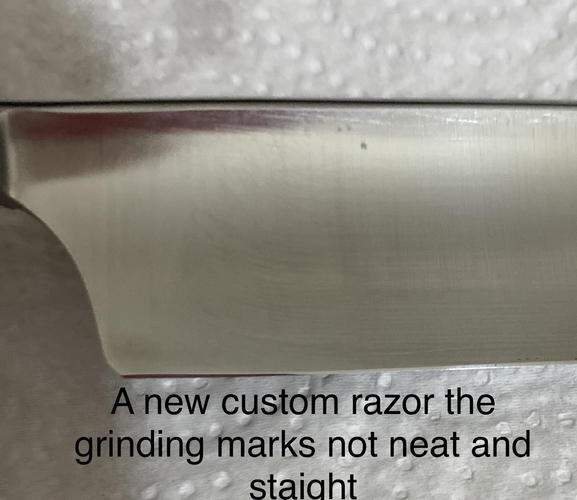
Originally Posted by
hatzicho

Really an interesting thread! Thanks for bringing that up.
During the last 5 years or so I searched for - and spoke to - maybe a dozen old german grinders about polishing of blades. Traditionally the polishing process on blades and razors in Solingen is done on wheels of either wood surrounded by leather, felt or cork. The choice of the material depends on what you are polishing. For example if you polish a hollow grinded blade or razor, a felt wheel might be too soft, so that the edges get rounded, therefore cork or wood is the better alternative. Of course there are different grades of hardness of felt and harder felts may also be used, so every grinder has his own experiences.
The surface of the wheels are covered with emery, traditionally Naxos emery, which is glued with bone glue to the wheel. Nowadays also so-called red-glue is used, but a lot of the old grinders swear on the usage of bone glue.
For different stages of polishing, different grades of Naxos emery is used. The pre-polishing is done with coarser emery and is getting finer during the process, which can consist of 5 stages or even more . Last stage before the black- or mirror polishing is the so-called blue polishing. Here the finest emery is used, typically Naxos grade 5/0. During the blue polishing, the surface of the steel is densified. Polishing does not only mean to cut the peaks of the metal surface but also to fill the valleys with material. After the blue polishing process, the surface of the steel shines blueish if turned into the light, hence the name. The surface of steel is somehow sealed after this stage of Polishing, therefore the knifes made of carbon steel don't oxidize too much and too fast. The blue polishing of knifes in Solingen was very famous in the past and still is today, of course it doesn't make the steel inoxidable, but somehow inactive to rust.
The mirror or black polishing is one stage further. Normally the same wheels are used that already did the blue polishing, means, no finer emery is used. Additional pastes help to do the special polishing effect. Nearly all of the grinders I spoke too, have their secrets, what to use, how long, which formular, etc.
Traditionally in Solingen Vienna chalk mixed with rape oil was applicated on the wheels. Vienna chalk is very soft, so depending on the hardness of the steel and the steel itself, also other materials have been used. Sometimes special polishing mops do the final polishing process.




 Oh yeaah, Some like it wet !!!!!
Oh yeaah, Some like it wet !!!!!

 221Likes
221Likes LinkBack URL
LinkBack URL About LinkBacks
About LinkBacks







 Reply With Quote
Reply With Quote